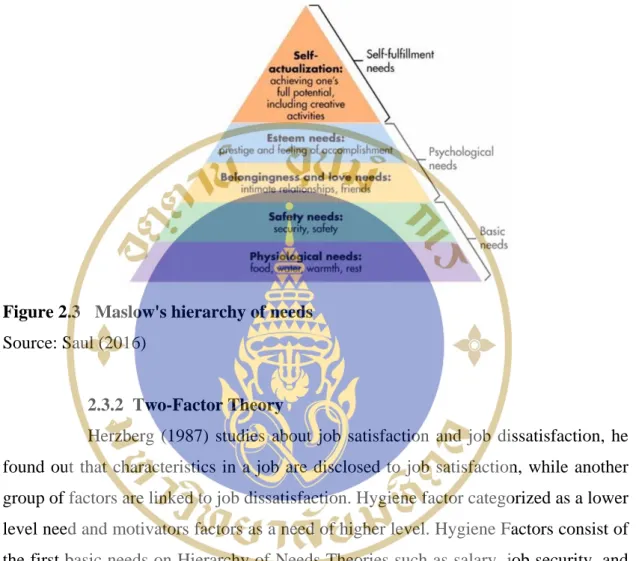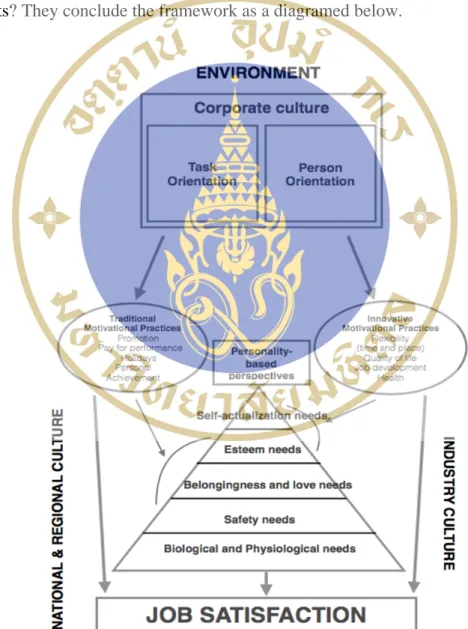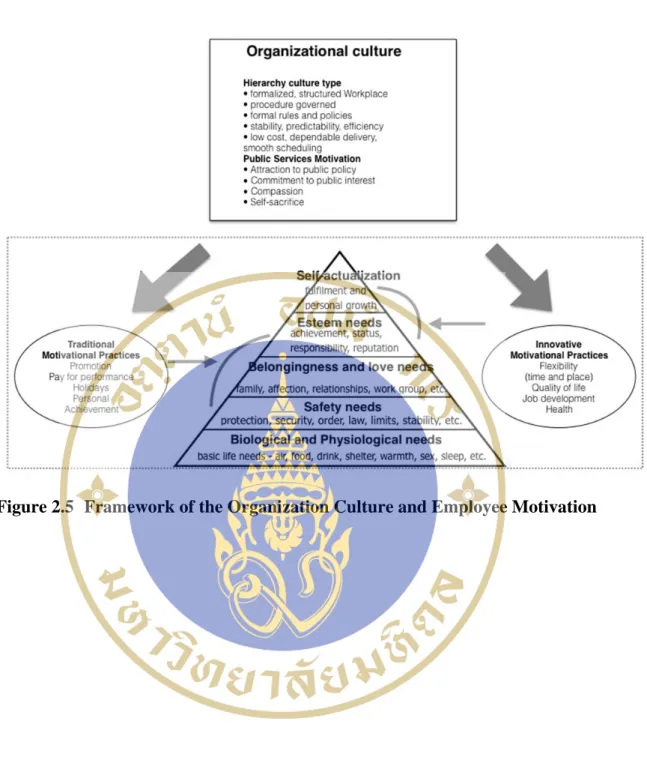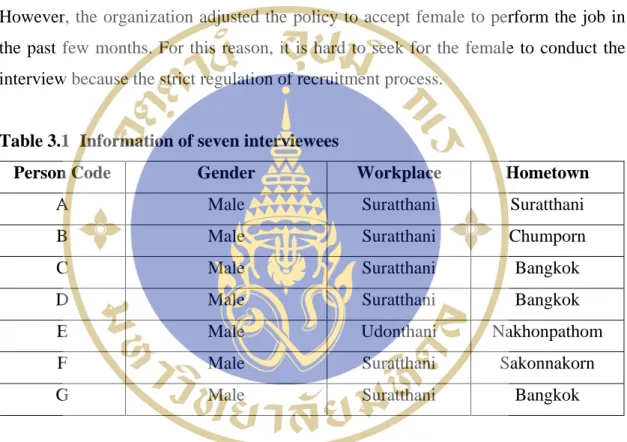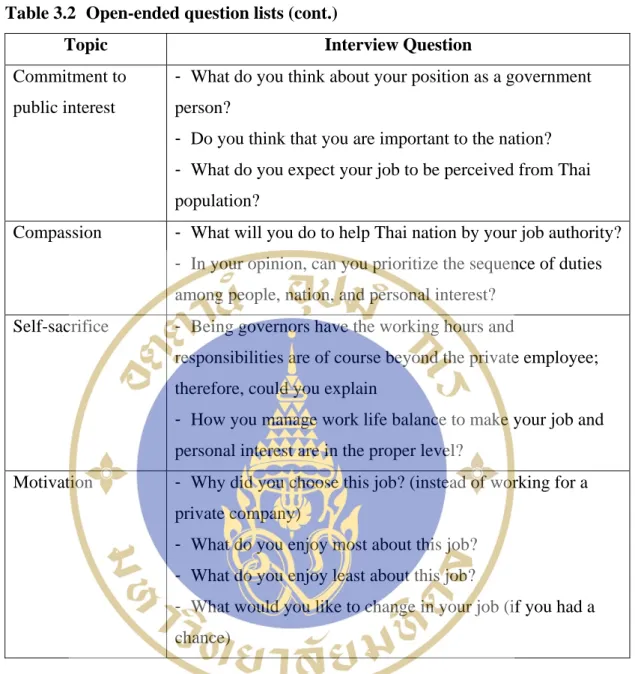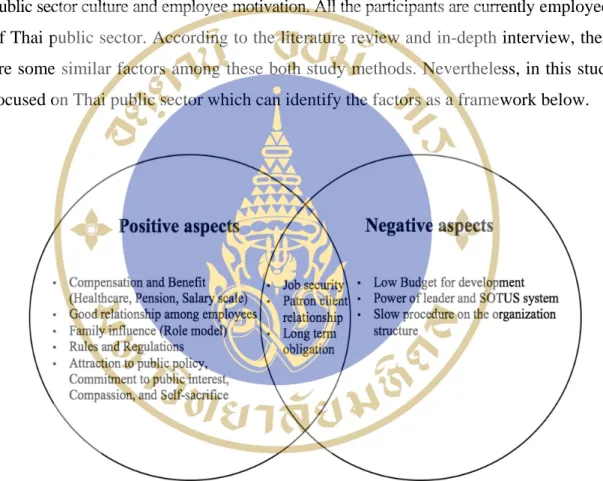The purpose of this research is to study the relationship between organizational culture and employee motivation in the Thai public sector. According to this statement, the culture of the Thai public sector is perceived as hierarchical, strict and complex. The purpose of the research is to study the motivation of the public sector in Thailand to better understand the relationship between organizational culture and motivation.
However, the strong culture of the Thai public sector will yield clearer results in terms of the findings.

LITERATURE REVIEW
- Culture Definition
- Organizational Culture Definition
- Motivation
- Hierarchy of Needs Theories
- Two-Factor Theory
- The linked Between Corporate Culture and Motivation
- Public Services Motivation
- Conclusion
Culture is defined as "the collective programming of the mind that distinguished one member of one group or category of people from another." (Hofstede, 2001, p.9). To complete the concept of culture are the differences between groups of people up to identification. A subculture is the collection of values, beliefs, and knowledge of an individual group of people who share common interests.
The unique culture of the organization includes values, norms and behaviors among the employees which may be different according to the relevant factors. Organizational culture is one of the important roles in the organization, including vision, values, norms and beliefs. According to the different characteristics of the organization, the unique strategies must be formed to respond to the differences in the relevant group.
The company's characteristics are result-oriented and demanding leadership towards productivity and profitability. Motivation is one of the tools that drive people in the same direction as the company. Hygiene factors consist of the first basic needs of hierarchy of needs theories, such as pay, job security, and relationships with others, as well as motivational factors, including achievement, personal growth, career advancement, and recognition.
According to the literature review, it could be concluded that there is a connection between company culture and employee motivation. The new framework combines the information and applies with Helou and Viitala's model of the influence of corporate culture on motivational practices and job satisfaction (2007), which resulted in the diagram below.
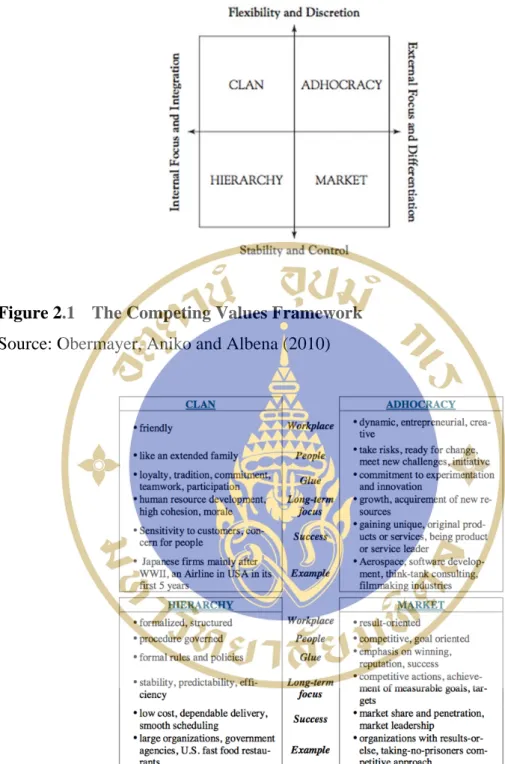
RESEARCH METHODOLOGY
Research Design
Collecting Primary Data
The challenge of working in this public sector is to minimize the risk from uncontrolled environments such as weather, accidents and air pressure. The respondents came from different places of residence but have to work in the location where the public sector commands. Moreover, the research questions sought to find out the significance of corporate culture on employee motivation; therefore, the sample group must have more than five years of work experience to ensure that the sample group has the correct understanding of the company culture.
In the past, the policy stipulates that the position of the target respondents must be male, as the nature of the job is consistent with the nature and behavior of the male. However, the organization adjusted the policy to accept women to do the job in recent months. For this reason, it is difficult to ask women to conduct the interview due to the strict regulation of the recruitment process.
Data collection
- Interview Questions
- Develop probing techniques and Conduct the interview
The interview questions consist of broad questions and open questions to gain as much understanding as possible from the interviewees. To get the answer from the interviewee, interviewer should improve the interviewees to explain their information and feeling and also observe the reaction to find the most valuable information. Can you explain from your work experience and based on your opinion the advantages and disadvantages of working in you.
Procedure controlled - In your work process, the hierarchy, regulations and procedure influence your work. What do you think are the biggest benefits of being public service governors? If you had the power to be involved in the policymaking process, what policies would you like to propose to improve the quality of life of public governors?
In your opinion, can you prioritize the order of duties among people, nation and personal interests. How you manage the balance between working life and your job and your personal interest is at the right level. The interviews used face-to-face interviews or telephone interviews with a length of approx. 30-40 minutes per person; the method depends on the convenience of the interviewer and interviewees.
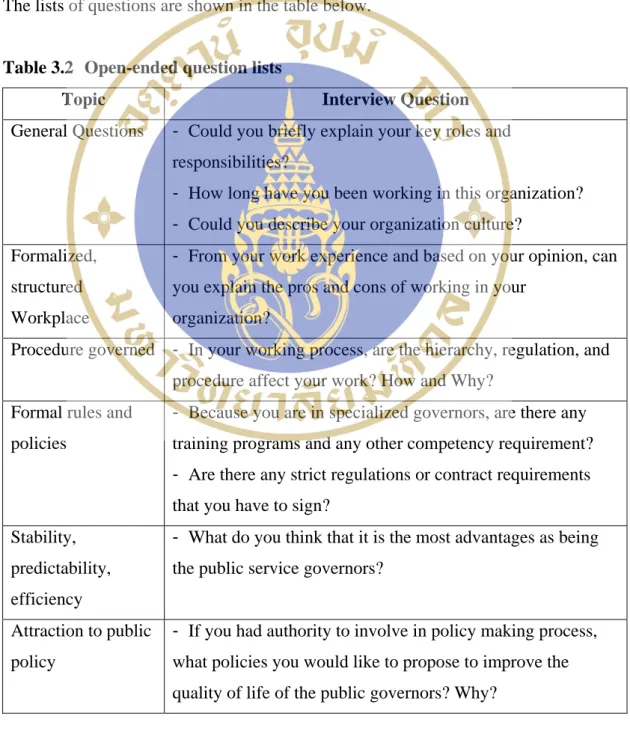
FINDINGS
Positive aspects
- Compensation and Benefit (Healthcare, Pension, Salary scale) We cannot deny that private sector motivates people to apply the job by
- Good relationship among employees
- Family influence (Role model)
- Rules and Regulations
- Attraction to public policy, Commitment to public interest, Compassion, and Self-sacrifice
Good relations between employees is an important factor that the respondents consider as an advantage of working in the public sector. But he mentioned that “my mother suggested that I work in the public sector because she wanted her son to be a 'Chao Khon Nai Khon'. E mentioned that “I want to work in this position because my family always talks about the advantages of working in the public sector.
My family compares pros and cons of the public and private sector and advises me to choose the public sector because of job security.” Mr. Four of the employees admitted that clear rules and regulations of the Thai public sector help them work more easily. Public sector is the department that provides the government services that benefit the whole society.
Four respondents admit that attraction to public policy, commitment to the public interest, compassion and self-sacrifice are very important factors influencing working in the public sector. G said: “I chose to work in the public sector because I have a passion for creating value for other people. I want them to see what we do for the community, more than the mistake we made.” This means that the characteristics of the Thai public sector support the employee's intrinsic motivation to work in the organization.
Negative aspects
- Low Budget for development
- Power leader and SOTUS system
- Slow procedure on the organization structure
The full support of the government can increase the moral support of the employees and also the ability to work in the organization. I must do whatever the leader orders; some of the leaders ordered private and unreasonable matters, but I cannot deny whatever he orders.” Mr. Managers also take a decision by increasing the number of salary scale.” It is not only the leader that the employees must respect, but they must respect all the highest rank and position.
For example, you must respect the former employee, despite the fact that he resigned from the company to work in the private sector.” Mr. B applies these issues that "During free time, the younger employee responsible for helping the older person work more efficiently because the older people have more work and responsibilities." This comment may explain the more obvious company culture that should respect the elderly related to Thai culture. From the interviewer's past experience, intimacy, the perspective of friends and family may recognize the public sector as an outdated organization with unfriendly people, so most people avoid contact with the public sector.
Nevertheless, the processes of the Thai public sector not only affect the perspective of outsiders, but also affect employees in the organization. According to the answers derived from interviews, the interviewees are also dissatisfied with the public sector procedure. G said: “The process of company makes us take a long time to wait without that time reminding; we cannot plan our work efficiently.
Ambivalent aspects
- Job security
- Patron client relationship
- Long term obligation
Scott (1972) explained about patron client relationship that "The basic pattern is an informal grouping consisting of a power figure who is in a position to provide security, inducements, or both, and his personal followers who, in return for such advantages, contribute their loyalty and personal assistance to the patron's designs." Mr. B mentioned that "Some powerful people in the company used the power in the negative way. It makes me feel unfair in the organization." There are both advantages and disadvantages of patronage relationship, it depends on the perspective of each employee.
This research paper focused on a part of the Thai public sector which has a long-term commitment to motivate people to stay in the company. The debt from scholarship assigns the employee to work with the company for the duration specified in the contract. There are four employees mentioned about long-term obligations that influence them to work with the company until they complete the contract or they were offered with the better benefit by the competitors.
A told that “The state fund supports employees to learn and work so that everyone in the company has their own debts and obligations. You get the benefit of the company, so you have to pay back as a human resource of the company. F enlarges on the debt that “The money of debt is not reduced until the number of years is overdue.
RECOMMENDATIONS
- Conclusion
- Comparison between Data Finding and Literature Review
- Recommendations
- To create healthy organization culture by providing positive aspects, avoiding negative aspects and balancing ambivalent aspects
- Design new recruitment process
- Limitations
- Suggestions for Further Research
Therefore, the company can align this evidence with their organizational structure and policies to increase employee motivation and employee performance. According to the three groups of data, there are the positive and negative effects of employee motivation, so the company should balance the intensity of each. With these companies, strategy can lead the company and the employees to achieve the desired result.
The understanding of company culture affects the motivation of employees will benefit the company to create the healthy organizational culture that can improve their employee motivation, job performance and long term expected outcome. According to the negative aspects, the company should support employee performance by providing more budget for development of both equipment and people such as equipment, office supplies and technology. Although, the ambivalent aspects have both positive and negative aspects, but the extreme of the degree in each side can prevent the negative impact on the company.
Next, the company must identify clear criteria for promotion or punishment to monitor employee performance. Human capital is a valuable and important resource that drives the company to achieve its long-term business goal. Therefore, the company can choose the candidate who has capabilities and fits the company culture.

